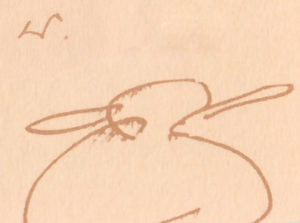THE CHURCHILL & CHARTWELL BOOKSELLERS PLATYPUS RESCUE MISSION
Winston Churchill was deeply enamored of platypuses.
An alarming story in the New York Times this week (yes, they are all alarming stories lately), headlined: “Can the World’s Strangest Mammal Survive?”, reminded us of Churchill’s abiding affection for the duckbilled platypus.
Platypuses in Australia today, according to the Times, are “imperiled by habitat loss, predation by feral cats and now drought and wildfires wrought by climate change.”
Winston Churchill, in 1943, asked Australia’s Prime Minister John Curtin to send him six duck-billed platypuses as a gesture of solidarity with Australia after the fall of Singapore to Japan. “This was a tall order,” Piers Brendon writes in his recent book, Churchill’s Menagerie. “Not only did it contravene Australia’s strict regulations protecting the platypus but it disregarded the creature’s extraordinary voracity and sensitivity.”
Platypuses are among nature’s shyest creatures, “with a bill like a duck, a body like a mole and a tail like a beaver,” as Dr. Brendon notes. “It walks like a reptile, lays eggs like a bird and suckles its young like a mammal.” The platypus also “possesses sensitive electro-receptors [in its bill] to detect prey, and large webbed feet, the back ones equipped with claws and poisonous ankle spurs.”
Churchill kept a stuffed and mounted platypus on view at No. 10 during the war (it had died naturally). Australia responded to his request for six live ones by persuading the Prime Minister that shipping one lone, live, platypus would really be best. In April 1943, a male was captured for this purpose and named Winston.
Shortly thereafter, Brendan Bracken sent his boss a classic platypus memorandum:
“Now that you have achieved your ambition to possess a platypus,” Bracken, then-Churchill’s Minister of Information, wrote, “you must decide where you are going to house the little creature. If you decide to keep it near you, you must send your cat Nelson into exile. The pussy could (and probably would) slaughter the platypus in a few fell minutes.”
Churchill decided to instead dispatch his platypus — when it arrived — to The London Zoo. Elaborate preparations ensued. A fast, newly-built Australian refrigerator ship, the Port Phillip, was provisioned in September with a portable “platypussary” — comprising a water tank, artificial burrows and sleeping accommodations — 50,000 worms, and a specially trained cadet to feed the notoriously ravenous platypus 750 worms per day (chased by a helping of custard!).
All went well until the ship reached the Panama Canal, where the worm supply began to dwindle. Atlantic convoy constraints further depleted the platypus’s diet. A German submarine attack finally finished Winston off. The submarine’s depth charges apparently shocked the poor platypus’s electro-sensory organs and the little creature expired. “Am grieved to have to tell you that the platypus you kindly sent me died on the last few days of its journey to England,” Churchill wrote to Australia on November 22, 1943.
Winston, the late-platypus, was nevertheless delivered to Winston, the P.M., preserved in a special bottle of fluid brought along for just such a sad potentiality. Churchill had his namesake stuffed and presented to the Royal College of Surgeons; a replacement for a platypus specimen of their own lost in the Blitz. This Winston’s whereabouts today are unknown.
The excellent, in-depth, N.Y. Times story documents the current desperate efforts by wildlife conservation officers from Sydney’s Taronga Zoo and academics from the University of New South Wales to save platypuses trapped in quickly shrinking bodies of water in the Tidbinbilla Nature Reserve, with new wildfires fast approaching.
Extinction is a terribly real possibility. The article also points out that platypuses, beyond their utter uniqueness as a species, might well prove to have value for human medicine. “Their milk contains a unique antibacterial protein that could lead to new, superbug-resistant antibiotics, according to scientists at Deakin University in Australia. Their venom might help fight Type 2 diabetes; in 2016, scientists at Flinders University and the University of Adelaide discovered that platypus venom contained a long-lasting hormone that promotes the release of insulin.”
With all of this in mind, we have decided to embark on The Churchill & Chartwell Booksellers Platypus Rescue Mission.
All monies raised will go directly to the Australian Platypus Conservancy Research & Conservation Fund.
>CLICK HERE FOR OUR FACEBOOK DONATION PAGE.<
With our thanks and, we’d like to think, Winston Churchill’s approval.



